|
Aussie Information!
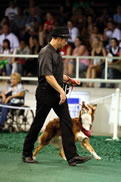 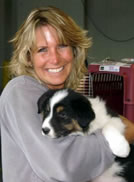 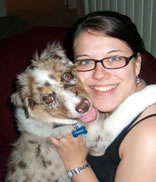  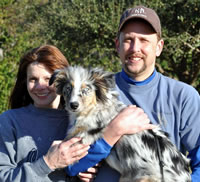 
Australian Shepherd Breed Standard
(Herding Group)
General Appearance
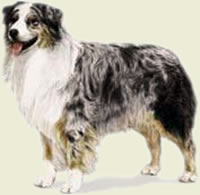 The Australian Shepherd is an intelligent working dog of strong herding and guarding instincts. He is a loyal companion and has the stamina to work all day. He is well balanced, slightly longer than tall, of medium size and bone, with coloring that offers variety and individuality. He is attentive and animated, lithe and agile, solid and muscular without cloddiness. He has a coat of moderate length and coarseness. He has a docked or natural bobbed tail. The Australian Shepherd is an intelligent working dog of strong herding and guarding instincts. He is a loyal companion and has the stamina to work all day. He is well balanced, slightly longer than tall, of medium size and bone, with coloring that offers variety and individuality. He is attentive and animated, lithe and agile, solid and muscular without cloddiness. He has a coat of moderate length and coarseness. He has a docked or natural bobbed tail.
Size, Proportion, Substance
Size--The preferred height for males is 20-23 inches, females 18-21 inches. Quality is not to be sacrificed in favor of size. Proportion--Measuring from the breastbone to rear of thigh and from top of the withers to the ground the Australian Shepherd is slightly longer than tall. Substance--Solidly built with moderate bone. Structure in the male reflects masculinity without coarseness. Bitches appear feminine without being slight of bone.
Head
The Head is clean cut, strong and dry. Overall size should be in proportion to the body. The muzzle is equal in length or slightly shorter than the back skull. Viewed from the side the topline of the back skull and muzzle form parallel planes, divided by a moderate, well-defined stop. The muzzle tapers little from base to nose and is rounded at the tip.
Expression --Showing attentiveness and intelligence, alert and eager. Gaze should be keen but friendly. Eyes are brown, blue, amber or any variation or combination thereof, including flecks and marbling. Almond shaped, not protruding nor sunken. The blue merles and blacks have black pigmentation on eye rims. The red merles and reds have liver (brown) pigmentation on eye rims. Ears are triangular, of moderate size and leather, set high on the head. At full attention they break forward and over, or to the side as a rose ear. Prick ears and hanging ears are severe faults.
Skull Top flat to slightly domed. It may show a slight occipital protuberance. Length and width are equal. Moderate well-defined stop. Muzzle tapers little from base to nose and is rounded at the tip.
Nose--Blue merles and blacks have black pigmentation on the nose (and lips). Red merles and reds have liver (brown) pigmentation on the nose (and lips). On the merles it is permissible to have small pink spots; however, they should not exceed 25% of the nose on dogs over one year of age, which is a serious fault. Teeth--A full complement of strong white teeth should meet in a scissors bite or may meet in a level bite. Disqualifications--Undershot. Overshot greater than 1/8 inch. Loss of contact caused by short center incisors in an otherwise correct bite shall not be judged undershot. Teeth broken or missing by accident shall not be penalized.
Neck, Topline, Body
Neck is strong, of moderate length, slightly arched at the crest, fitting well into the shoulders. Topline--Back is straight and strong, level and firm from withers to hip joints. The croup is moderately sloped. Chest is not broad but is deep with the lowest point reaching the elbow. The ribs are well sprung and long, neither barrel chested nor slab-sided. The underline shows a moderate tuck-up. Tail is straight, docked or naturally bobbed, not to exceed four inches in length.
Forequarters
Shoulders--Shoulder blades are long, flat, fairly close set at the withers and well laid back. The upper arm, which should be relatively the same length as the shoulder blade, attaches at an approximate right angle to the shoulder line with forelegs dropping straight, perpendicular to the ground. Legs straight and strong. Bone is strong, oval rather than round. Pastern is medium length and very slightly sloped. Front dewclaws may be removed. Feet are oval, compact with close knit, well arched toes. Pads are thick and resilient.
Hindquarters
The width of the hindquarters is equal to the width of the forequarters at the shoulders. The angulation of the pelvis and upper thigh corresponds to the angulation of the shoulder blade and upper arm, forming an approximate right angle. Stifles are clearly defined, hock joints moderately bent. The hocks are short, perpendicular to the ground and parallel to each other when viewed from the rear. Rear dewclaws must be removed. Feet are oval, compact with close knit, well arched toes. Pads are thick and resilient.
Coat
Hair is of medium texture, straight to wavy, weather resistant and of medium length. The undercoat varies in quantity with variations in climate. Hair is short and smooth on the head, ears, front of forelegs and below the hocks. Backs of forelegs and britches are moderately feathered. There is a moderate mane and frill, more pronounced in dogs than in bitches. Non-typical coats are severe faults.
Color
Blue merle, black, red merle, red-all with or without white markings and/or tan (copper) points, with no order of preference. The hairline of a white collar does not exceed the point of the withers at the skin. White is acceptable on the neck (either in part or as a full collar), chest, legs, muzzle underparts, blaze on head and white extension from underpart up to four inches, measuring from a horizontal line at the elbow. White on the head should not predominate, and the eyes must be fully surrounded by color and pigment. Merles characteristically become darker with increasing age. Disqualifications White body splashes, which means white on body between withers and tail, on sides between elbows and back of hindquarters in all colors.
Gait
The Australian Shepherd has a smooth, free and easy gait. He exhibits great agility of movement with a well-balanced, ground covering stride. Fore and hind legs move straight and parallel with the center line of the body. As speed increases, the feet (front and rear) converge toward the center line of gravity of the dog while the back remains firm and level. The Australian Shepherd must be agile and able to change direction or alter gait instantly.
Temperament
The Australian Shepherd is an intelligent, active dog with an even disposition; he is good natured, seldom quarrelsome. He may be somewhat reserved in initial meetings. Faults Any display of shyness, fear or aggression is to be severely penalized.
Disqualifications
Undershot. Overshot greater than 1/8 inch.
White body splashes, which means white on body between withers and tail, on sides between elbows and back of hindquarters in all colors.
Approved May 14, 1991,
Effective January 1, 1993, AKC.
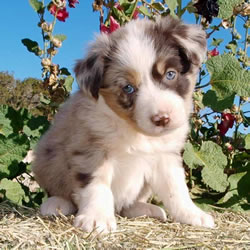 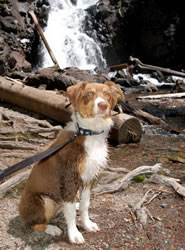 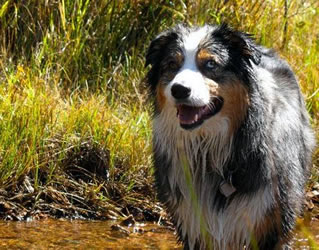 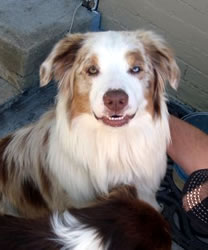
The Merle Gene
By: Pam Bethurum, ASCA Education Coordinator
The Australian Shepherd comes in four basic body colors: Merle (Blue or Red), Solid (Black or Red) All with or without white and/or copper trim. A solid dog with white and copper trim is called a Tri Color. A solid dog with only white trim is called a Bi Color. A solid dog with only copper trim is called a black/red and copper. A merle with white and copper trim is called a "Merle". A merle with only white trim is called a "Merle with White". A merle with only copper trim is called a "Merle with Copper".
For more information on Aussie colors, please read "The Merle Gene" by Pam Bethurum.
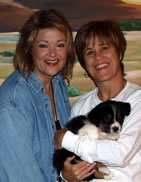 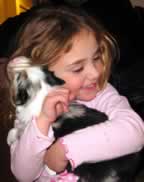 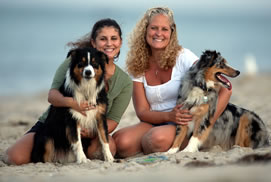 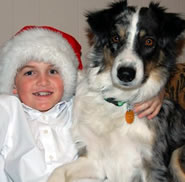 
Australian Shepherd History & Information
Although there are many theories about the origin of the Australian Shepherd, the breed as we know it today developed exclusively in the United States. It probably originated in the Basque region of the Pyrenees Mountains between Spain and France, but was dubbed the Australian Shepherd because of its association with Basque shepherds who came to the United States from Australia in the 1800's.
As with most working breeds, the Australian Shepherd was initially called by many names, including Spanish Shepherd, Pastor Dog, Bob-Tail, Blue Heeler, New Mexican Shepherd, and California Shepherd.
The Australian Shepherd's popularity rose rapidly with the boom in Western-style horse riding after World War II. The breed became known to the general public via appearances in rodeos, horse shows, movies, and television programs. Its inherent versatility and trainability made it a useful asset on farms and ranches.
Ranchers continued to develop the breed, maintaining the adaptability, keen intelligence, strong herding instincts, and eye-catching appearance that originally won its admirers. As a herder, the Australian Shepherd is a loose- to medium-eyed dog. ("Eye" is a general term used to describe the way a dog controls stock with its gaze.) It will watch an entire group of animals, but not with an intense gaze. Some dogs use more eye in situations where added power is required to move stubborn or balky animals, while holding off on single animals, as in the shed.
The Aussie (as the breed is nicknamed) is a truly versatile dog. It is so sound minded that it easily adapts to various situations. Today, the Australian Shepherd serves humanity in every imaginable way: as working ranch dogs, guide dogs for the blind, hearing dogs for the deaf, pet therapy dogs, drug detectors, and search-and-rescue dogs.
The breed is not registered in Australia as a native breed, although Australian Shepherds have been registered by other registries since the 1950's. The United States Australian Shepherd Association works hard to maintain the breed true to type in its land of origin. The breed entered the AKC Stud Book in 1991 and entered the Herding Group in January 1993.
- The Australian Shepherd is AKC's 135th breed.
- The Aussie as we know it today developed in the US.
- The Aussie probably originated in the Basque region of the Pyrenees Mountains, but it was dubbed the Australian Shepherd because of its association with Basque shepherds who arrived in the United States from Australia in the 1800's.
- Previous names of the Aussie include Spanish Shepherd, Pastor Dog, Bob-Tail, Blue Heeler, New Mexican Shepherd, and California Shepherd.
- The Aussie's popularity boomed with Western culture and horse-riding after WWII and was often featured in rodeos, horse shows, movies, and TV.
- The Aussie is a favorite of ranchers, who use the breed for its inherent trainability and herding ability. It is a loose- to medium-eyed dog ("eye" being a general term referring to the way a dog controls stock via gaze).
- The Australian Shepherd is not registered in Australia as a native breed, although it has been registered by other registries since the 1950's.
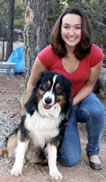 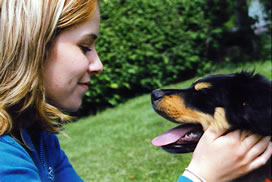 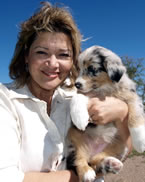 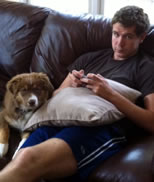 
You have an Aussie
You have a breed that's a little over 150 years old.
You have a breed that is the only herding stock dog originally bred in America, and is truly American, being a great big melting pot of different breeds to get what they wanted.
You have a breed that was bred to be able to herd one thousand sheep with a few buddies and only one human shepherd.
You have an Aussie.
You have a breed that was bred for sheep but able to think and adjust to herd ducks, gees...e, pig, chickens, and rabbits And each one herded differently .
You have a breed that guarded all those sheep, ducks, geese, and rabbits, so it made sure it kept it's eyes on you.
You have a breed that has guarding instincts as strong as it's herding instincts.
You have a breed that ranchers loved because if you needed something done, it could do it.
You have an Aussie.
You have a breed that was known as early as 1860 for it's intelligence, gentleness, loyalty and uncompromising courage and strength in the face of danger.
You have a breed that was bred to have no trouble continually moving with a comfortable lope all day. Every day.
You have a breed that doesn't care about the weather, and has worked everywhere from Antarctica to the hot dry plains of Texas.
You have an Aussie.
You have a breed that is known for incredible energy and intelligence and also being one of the most destructive dogs there is when those aren't taken care of.
You have a breed that you thought you knew what it took to raise one, and was still surprised. And still got another one.
You have a breed that has no problem running your home if they don't think you are doing it right.
You have a breed that made the list of ten most high maintenance dogs. And you weren't surprised.
You have a breed that you have actively talked people out of getting. And laugh when non aussie owners say they can take care of it for a little while.
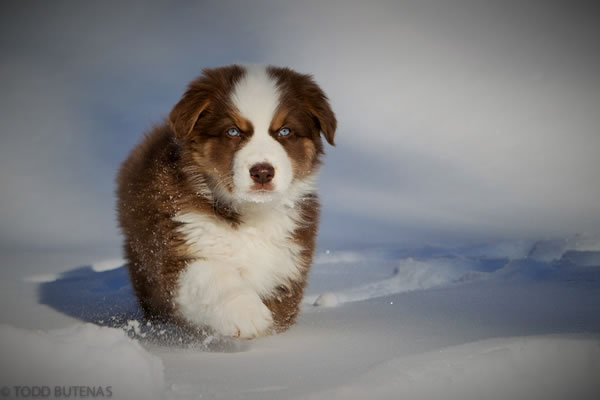
You have an Aussie and wouldn't trade it for the world.
|







 The Australian Shepherd is an intelligent working dog of strong herding and guarding instincts. He is a loyal companion and has the stamina to work all day. He is well balanced, slightly longer than tall, of medium size and bone, with coloring that offers variety and individuality. He is attentive and animated, lithe and agile, solid and muscular without cloddiness. He has a coat of moderate length and coarseness. He has a docked or natural bobbed tail.
The Australian Shepherd is an intelligent working dog of strong herding and guarding instincts. He is a loyal companion and has the stamina to work all day. He is well balanced, slightly longer than tall, of medium size and bone, with coloring that offers variety and individuality. He is attentive and animated, lithe and agile, solid and muscular without cloddiness. He has a coat of moderate length and coarseness. He has a docked or natural bobbed tail. 













